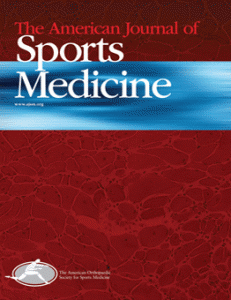Tibial fixation in anterior cruciate ligament reconstruction: a prospective randomized study comparing metal interference screw and staples with a centrally placed polyethylene screw and sheath.
Am J Sports Med. 2011 Sep;39(9):1858-64. doi: 10.1177/0363546511406234. Epub 2011 May 27. 
De Wall M1, Scholes CJ, Patel S, Coolican MR, Parker DA.
Background:
- Tibial side fixation for soft tissue grafts in ACL surgery is considered the weakest point of fixation.
- While eccentrically placed interference screw has provided satisfactory results, biomechanical studies have proven that the strength of tibial side fixation can be significantly improved with the use of centrally placed screw/sheath constructs.
- In addition, they allow symmetric graft tensioning, provide larger surface area for biologic integration and the sheath minimises graft damage.
Objective: To compare the clinical efficacy of central screw/sheath construct (INTRAFIX) with eccentrically placed metal interference screw with supplemental staple fixation (RCI) in ACL reconstruction surgery in young patients
Methods:
- 113 consecutive patients undergoing ACL reconstruction were randomized to 2 groups; group 1 – 56 patients (INTRAFIX) and group 2 – 57 patients (RCI).
- A 4-stranded hamstring graft was used in all patients. Laxity measurements (KT arthrometer at 134N) and subjective assessment scores (Mohtadi, Lysholm and IKDC) were evaluated preoperatively and at 2 years post surgery.
Results:
- Both methods provided satisfactory results in terms of stability testing and subjective assessment at 2 years follow up.
- There were significant but not different improvement in clinical outcome in both groups compared to preoperative evaluation.
- There were 7 failures; all were due to reinjury with in the 1st year (P >0.05). Interpretation: Though biomechanical studies have claimed superiority for INTRAFIX type constructs, a similar outcome could not be replicated in this study.
- One possible reason may be the use of supplemental staple fixation in the interference screw group, which has been shown to augment the construct strength on the tibial side.
Conclusions: INTRAFIX performs comparably with RCI in stability testing and provides equivalent clinical outcomes at 2 years follow up in a randomized clinical setting.
Drawbacks: 2 surgeons performed the surgeries. One surgeon operated 5 of the 7 failures. All failed patients were however elite athletes, returning to aggressive sports early.
Strengths: A prospective randomized design, good homogenous sample size with fixation method being the only variable and 86% follow up at 2 years.
Ref
1.http://www.ncbi.nlm.nih.gov/pubmed/21622815
Edited by Ashok Sunil Gavaskar
Leave a Reply